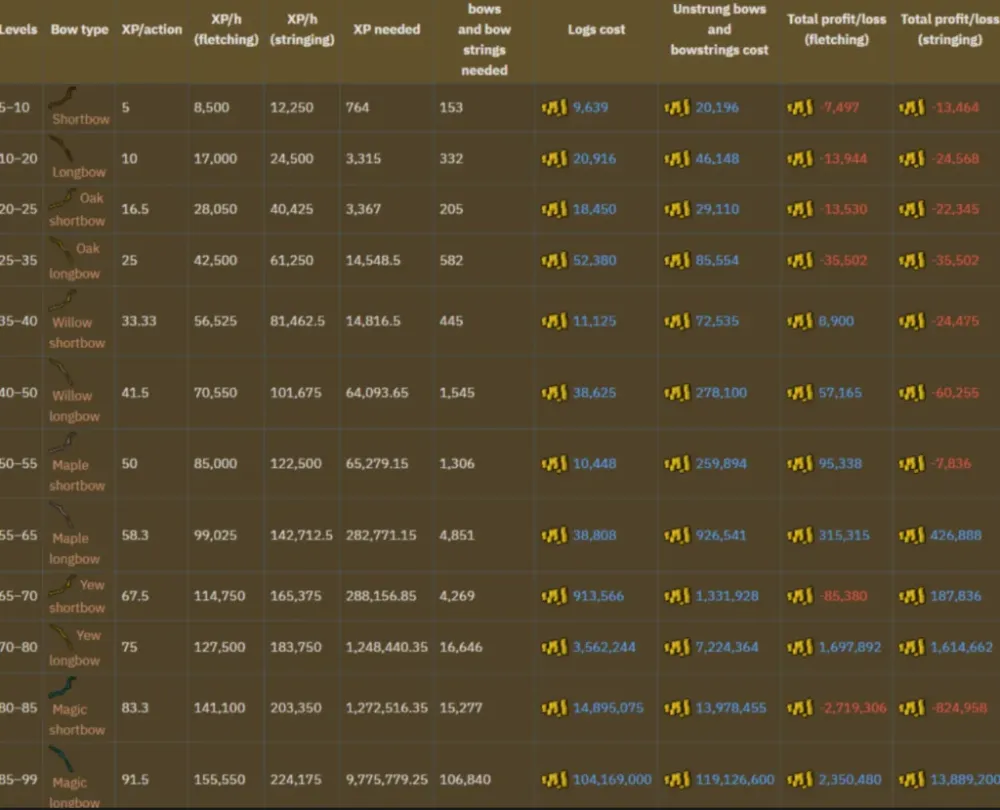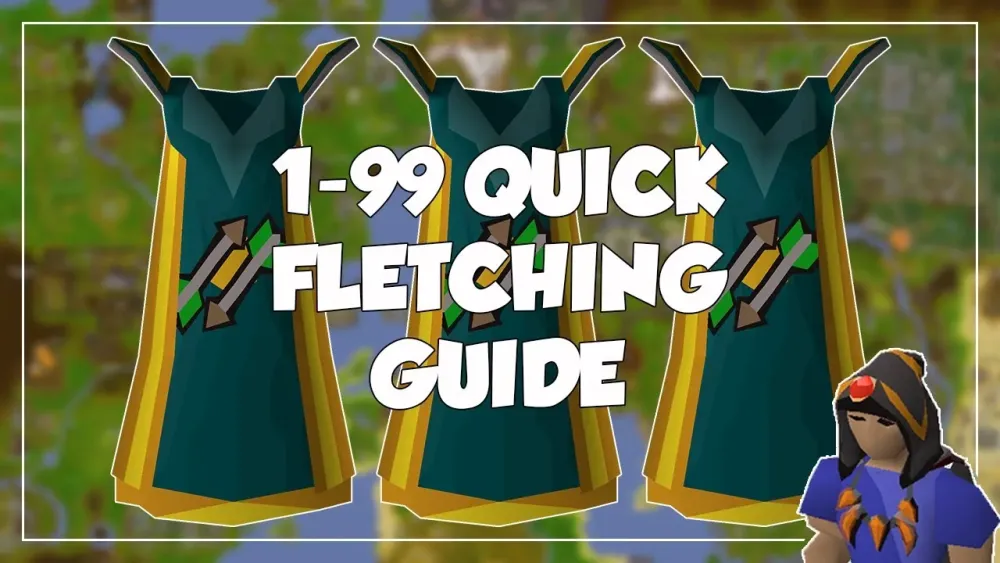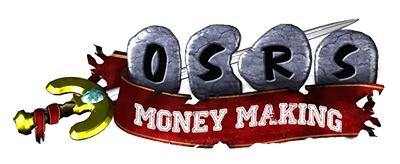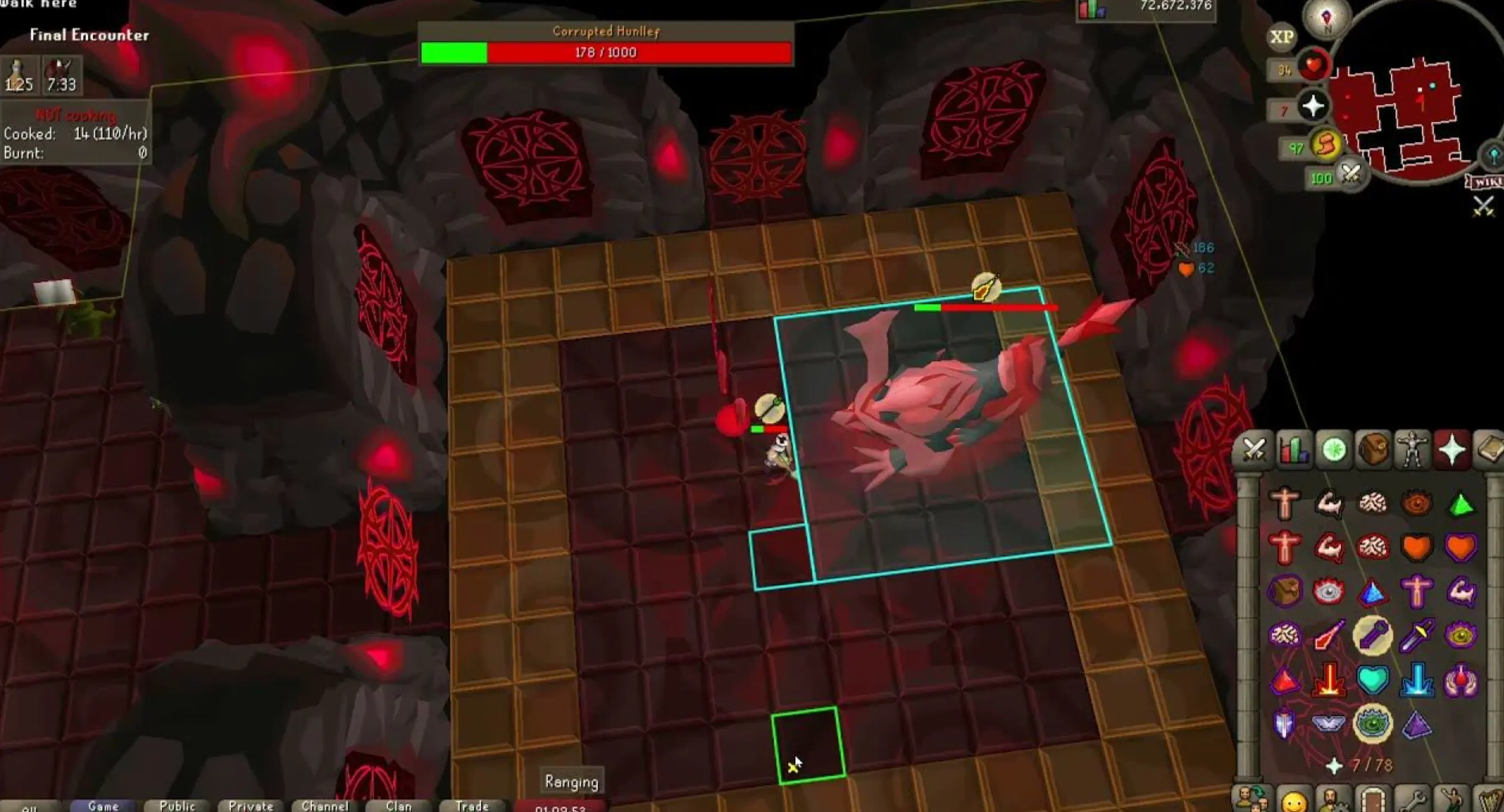Your cart is empty
Ultimate 99 Fletching Guide for OSRS

Fletching is a vital skill in Old School RuneScape (OSRS) that allows players to craft bows, arrows, and other ranged weaponry. As one of the key skills for ranged combat, mastering Fletching can significantly enhance your gameplay experience. This guide will provide a comprehensive overview of Fletching, including its benefits, methods to level up efficiently, and tips to maximize experience gains. Whether you are a beginner or looking to refine your skills, this ultimate guide aims to provide everything you need to know about achieving level 99 Fletching.
Fletching experience is earned by creating items using various materials, primarily logs and feathers. The experience gained varies depending on the item crafted, with more complex and higher-level items yielding greater experience. Here’s a breakdown of the main methods to gain Fletching experience:
1. *Cutting Logs: The most basic way to start Fletching is by cutting logs into arrow shafts, which provides experience for each log cut. Players can cut normal logs, oak logs, willow logs, maple logs, yew logs, and magic logs, each offering increasing experience points. Typically, cutting logs is a low-cost method to start training, especially at lower levels.
2. Making Arrow Shafts: After cutting logs, you can create arrow shafts, which is an essential step in Fletching. This process grants experience and prepares you for crafting arrows later. The experience gained from making arrow shafts is minimal but helps progress through the early levels.
3. Fletching Bows: As you progress, crafting bows becomes a more efficient way to gain experience. Players can create shortbows and longbows from different types of logs, with each bow type yielding varying experience. The higher the bow level, the more experience earned. For example, making a magic longbow grants a substantial amount of experience compared to a regular shortbow.
4. Creating Arrows: Combining arrow shafts with feathers allows players to create arrows, another effective method for gaining experience. The experience varies by the type of arrow created, with higher-tier arrows providing significantly more experience. For instance, making rune arrows yields a high experience reward, making it a preferred option for players aiming for level 99.
5. Using the Fletching Skill to Create Other Items: Besides bows and arrows, Fletching can be used to craft various items such as darts, bolts, and even some special items like the blowpipe. Each of these items provides different experience rates and can be a part of your training strategy.
6. Experience Boosts*: To maximize experience gains, players can utilize experience-boosting items and bonuses, such as the Fletching cape, which offers a passive experience gain while training. Additionally, using experience lamps and participating in events can provide significant boosts to your Fletching experience.
By understanding the methods and strategies outlined above, players can effectively plan their Fletching training to reach level 99 in OSRS. The key is to balance experience efficiency with resource management to ensure a smooth and enjoyable leveling experience.
Essential Tools for Fletching

When diving into the world of Fletching in Old School RuneScape (OSRS), having the right tools can make all the difference. Here’s a rundown of the essential items you’ll need to get started:
- Knife: A basic knife is crucial for fletching. It’s used to cut logs into shafts and create arrows. You can purchase a knife from various general stores or find one in your bank.
- Logs: Different types of logs are your primary materials. You’ll start with regular logs and progress to better quality ones. Here are some common logs used in Fletching:
- Bow String: You’ll need bow strings to craft bows. They can be made from flax, which you can spin at a spinning wheel or buy from other players.
- Quiver or Inventory Space: To keep your materials organized, having some extra inventory space or a quiver can help manage your items as you fletch.
| Log Type | Level Requirement | Experience Points |
|---|---|---|
| Regular Logs | 1 | 1 |
| Oak Logs | 15 | 37.5 |
| Willow Logs | 30 | 67.5 |
| Maple Logs | 45 | 100 |
With these tools in hand, you’ll be well-equipped to start your Fletching journey!
Levels 1-20: Getting Started with Fletching
Starting your Fletching journey in OSRS can be exciting, and reaching level 20 opens up new opportunities. Here’s a step-by-step guide to help you navigate through the first 20 levels:
- Level 1-5: Begin by cutting Regular Logs into Arrow Shafts. Each log will give you 1 experience point, and you’ll need to make 28 shafts to reach level 5.
- Level 5-10: Once you hit level 5, start crafting Headless Arrows by attaching arrow shafts to Feathers. This will net you 1 experience per arrow, and you’ll need to create 50 to reach level 10.
- Level 10-15: Now it’s time to create Shortbows. You can fletch Oak Shortbows using Oak Logs. Crafting these bows will give you 16 experience points each. You’ll need to make around 25 bows to get to level 15.
- Level 15-20: At level 15, continue with Oak Shortbows or switch to crafting Willow Shortbows. These will provide you with 33 experience points each. You’ll need to make around 15 bows to hit level 20.
Reaching level 20 is just the beginning, and you’ll find that Fletching can be a rewarding skill both for crafting gear and for making some extra gold!
Levels 20-50: Efficient Training Methods
Once you’ve hit level 20 in Fletching, you’ll want to start maximizing your experience gains. Here are some efficient training methods to get you through levels 20 to 50:
- Headless Arrows (Level 1-40): Crafting headless arrows is a great way to start. You’ll need logs and feathers. Each headless arrow gives you 1 experience point, and you can make them in bulk.
- Bronze and Iron Arrows (Level 1-50): After creating headless arrows, move on to making bronze and iron arrows. For every arrow you craft, you earn 1 experience point. This method is cost-effective and efficient.
- Shortbows (Level 20-50): Once you reach level 20, you can start crafting shortbows. The experience per shortbow is higher than arrows, making this a good option. Use regular logs for the highest profit.
- Maple Shortbows (Level 35): At level 35, switch to maple logs for crafting shortbows. This will provide a significant experience boost and is a good step toward leveling up quickly.
Keep in mind the importance of using banking efficiently. It’s a good idea to use a bank near your training area to minimize downtime. Also, consider utilizing the Fletching skill cape once you reach level 99, which can provide bonuses for your training.
Levels 50-99: Best Practices and Tips
As you progress from level 50 to 99, it’s crucial to adopt the best practices and tips to ensure you’re training effectively. Here’s what you need to know:
- Yew and Magic Bows (Level 50-99): Start crafting yew bows at level 50, then switch to magic bows at level 61. This change maximizes your experience per hour.
- Use Darts for Fast XP (Level 50+): Crafting darts is another efficient way to gain experience. You can create them quickly, and they offer a good experience rate.
- Utilize Experience Lamps: If you have any experience lamps from quests or events, use them wisely to boost your Fletching experience.
- Join a Fletching Clan: Being part of a community can provide motivation and additional tips from fellow players. It’s a great way to learn and share strategies.
Additionally, don’t forget to take advantage of boosts and bonuses during events or through items. This can significantly speed up your training process. Lastly, always keep an eye on the Grand Exchange prices for materials to ensure you’re training economically.
7. Profitability of Fletching: What to Craft
When it comes to Fletching in Old School RuneScape (OSRS), understanding what to craft for maximum profit is essential. Fletching allows you to create a variety of items, but not all are created equal in terms of profitability. Here’s a breakdown of some items you should consider crafting:
- Broad Arrows: These are generally a great choice, especially if you have access to the Slayer skill. They provide solid experience and can be sold for a decent profit.
- Magic Longbows: Crafting Magic Longbows is highly lucrative. With a steady supply of Magic logs, you can easily bank on these bows for a significant profit margin.
- Abyssal Darts: While crafting darts may not be the most straightforward method, they yield high profits. Use the best materials you can to maximize returns.
- Rune Arrows: Rune arrows are always in demand, particularly among players who engage in boss fights or PvP. Crafting these can lead to a good return on investment.
To determine the best items to craft, keep an eye on the Grand Exchange prices. It’s also wise to consider the time and resources required for each item. A table comparing the costs and potential profits can be very helpful:
| Item | Cost per Item | Sale Price per Item | Profit per Item |
|---|---|---|---|
| Broad Arrows | 5 GP | 15 GP | 10 GP |
| Magic Longbows | 1,000 GP | 1,500 GP | 500 GP |
| Abyssal Darts | 50 GP | 90 GP | 40 GP |
| Rune Arrows | 1,500 GP | 2,000 GP | 500 GP |
By focusing on these items and staying updated with the market trends, you can maximize your Fletching profitability!
8. Common Mistakes to Avoid in Fletching
Fletching can be an enjoyable and profitable skill to train, but it’s easy to make mistakes that can eat into your profits or slow your progress. Here are some common pitfalls to avoid:
- Not Checking Market Prices: Always check the Grand Exchange for current prices before crafting items. Prices can fluctuate quickly, and crafting items that are losing value can result in losses.
- Crafting the Wrong Item: Focus on items that not only provide good experience but also have a solid profit margin. Research and keep track of which items are in demand.
- Ignoring Experience Rates: While profit is essential, don’t overlook the experience you gain. Sometimes, it’s worth crafting items with lower profits if they yield higher experience rates.
- Overstocking Materials: It’s tempting to stockpile logs or feathers, but having too many can lead to wasted resources. Always craft what you can sell quickly to avoid excess inventory.
By steering clear of these mistakes, you can streamline your Fletching training and ensure you’re making the most out of every arrow, bow, or dart you craft. Happy Fletching!
Ultimate 99 Fletching Guide for OSRS
Fletching is a crucial skill in Old School RuneScape (OSRS), allowing players to create bows, arrows, and other ranged equipment. Achieving level 99 Fletching not only unlocks a range of powerful items but also grants the coveted “Maxed” status. This guide will provide you with everything you need to know to maximize your Fletching experience efficiently.
Requirements for Fletching
- Basic woodcutting knowledge for gathering logs.
- Access to a knife for shaping materials.
- Understanding of various fletching items and their experience yields.
Experience Table
| Item | Level Required | Experience |
|---|---|---|
| Arrow Shaft | 1 | 1 |
| Headless Arrow | 1 | 1 |
| Bronze Arrow | 1 | 2 |
| Maple Shortbow | 50 | 75 |
| Dragon Arrow | 60 | 17.5 |
| Magic Longbow | 70 | 100 |
Leveling Strategies
To efficiently reach level 99 Fletching, consider the following methods:
- Levels 1-20: Create headless arrows.
- Levels 20-55: Fletch Maple Shortbows or Willow Longbows.
- Levels 55-70: Craft Adamant Arrows.
- Levels 70-99: Make Dragon Arrows or Magic Longbows.
Tips for Success
Utilize the following tips to enhance your Fletching experience:
- Use the best logs available for maximum experience.
- Consider using the experience-boosting items such as the Fletching cape.
- Join fletching communities for advice and support.
Mastering Fletching in OSRS not only enhances your gameplay experience but also provides significant in-game benefits, making it a rewarding endeavor for serious players.

